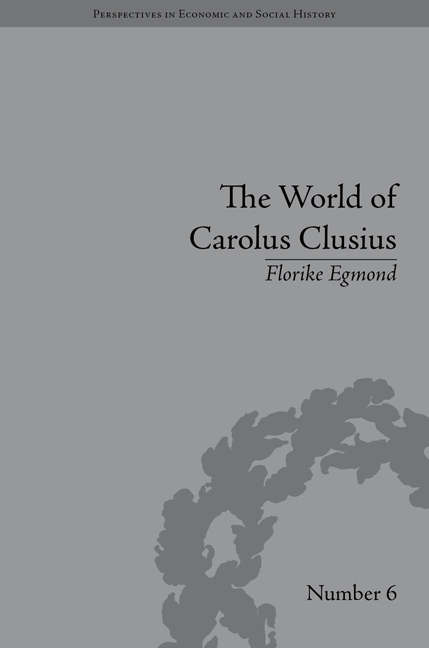Book contents
- Frontmatter
- CONTENTS
- Miscellaneous Frontmatter
- Preface
- Technical Note
- Abbreviations
- List of Figures
- Introduction
- I The Southern Netherlands
- II Habsburg Women
- III Italy
- IV France
- 7 Fieldwork in France: Exploring the Indigenous Flora
- 8 French Collectors between Port and Court: The Desire for Rarity
- V Holland
- VI Beyond Place
- Conclusion
- Notes
- Works Cited
- Index
7 - Fieldwork in France: Exploring the Indigenous Flora
from IV - France
- Frontmatter
- CONTENTS
- Miscellaneous Frontmatter
- Preface
- Technical Note
- Abbreviations
- List of Figures
- Introduction
- I The Southern Netherlands
- II Habsburg Women
- III Italy
- IV France
- 7 Fieldwork in France: Exploring the Indigenous Flora
- 8 French Collectors between Port and Court: The Desire for Rarity
- V Holland
- VI Beyond Place
- Conclusion
- Notes
- Works Cited
- Index
Summary
On 7 November 1600 Canon Joachim Levenier at Bordeaux sent Clusius a box with bulbs and other plants that he had collected during botanizing trips in the Pyrenees and the Bordeaux region. The box was shipped but the ship was wrecked and the box with precious plants lost. A separate letter, which arrived in Leiden on 19 January 1601, tells us, however, what the box contained and how rare some of these plants were in Levenier's opinion:
Crocus with long, hair-like leaves and a white flower, 2. They are very rare and I have found only three.
Crocus with long, hair-like leaves and an almost purple flower, several bulbs. The two white ones are apart on the other side of the box.
Fritillary with a white flower, also apart
Mountain fritillary with an almost black flower, 5
Gentian mayor, a big plant
Lily-hyacinth (hyacinth liliac), 2
Hemerocallis with yellow flowers, 30 & some small ones
Hemerocallis with yellow flowers without any spots, 1, it is wrapped up in cotton in order to distinguish it
Sea narcissus, which is commonly called pancratium with a white flower, 6. I have not had the red one in flower yet, as soon as it flowers I will send it to you
Pseudonarcissus Aquitanicus with a campanula-shaped yellow flower surrounded by white petals, I send you 6
Mountain pseudonarcissus with pale-coloured flowers, 4. (Levenier, 7 November 1600)
Levenier hoped that Clusius would ‘liberally share’ the 30 yellow hemerocallises ‘with whom he wished’.
- Type
- Chapter
- Information
- The World of Carolus ClusiusNatural History in the Making, 1550–1610, pp. 107 - 124Publisher: Pickering & ChattoFirst published in: 2014



